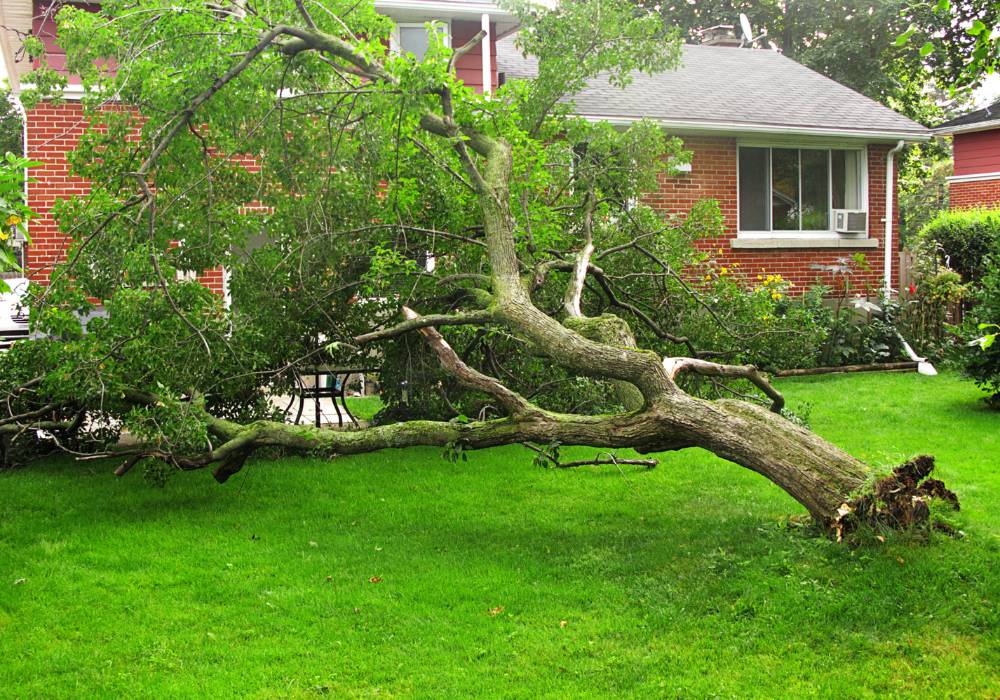Identifying Trees That Are a Risk of Falling

Trees are a beautiful and essential part of our natural environment, providing clean air, shade, and a habitat for wildlife. However, when trees become unstable or decay, they can pose a significant risk to people and property. Identifying trees that are at risk of falling is, therefore, crucial for preventing accidents and ensuring public safety.
This blog post aims to provide readers with the knowledge and tools to identify trees at risk of falling. Through discussing the signs of a tree that may be unstable, how to assess the risk of falling, and what to do if you identify a tree that poses a risk, readers will gain a deeper understanding of the importance of tree maintenance and how to keep their communities safe.
The thought of this article is that by identifying trees that may be at risk of falling and taking appropriate action, we can reduce the incidence of accidents and promote a healthy, thriving natural environment for all.
Signs of a Tree That May Be at Risk of Falling
Identifying the signs of a tree at risk of falling is essential to ensuring public safety and protecting property. Trees can become unstable for a variety of reasons, such as disease, age, or damage. By knowing what to look for, you can detect potential issues early and take steps to prevent accidents.
Some common signs of a tree that may be at risk of falling include leaning, cracks and split in the trunk or branches, dead or dying branches, decay or rot in the trunk or branches, excessive or uneven canopy growth, presence of pests or diseases, and unusual or abnormal growth patterns.
These signs can indicate that a tree is under stress and may not be able to withstand strong winds or other environmental factors. By monitoring trees for these signs and taking appropriate action, such as pruning or removal, we can reduce the risk of accidents and keep our communities safe.
How to Assess the Risk of Falling
Identifying the signs of a tree that may be at risk of falling is an essential first step, but assessing the level of risk involved is crucial. To do this, you need to evaluate the tree’s size and weight, the soil condition around the tree, the stability of the root system, and the tree’s exposure to wind and other environmental factors.
Assessing the risk of falling involves carefully observing and considering the tree’s physical characteristics and surroundings. You should measure the tree’s height and diameter to determine its size and weight, as larger trees are more likely to cause significant damage if they fall. You should also examine the soil around the tree to check for signs of erosion, moisture, or other issues that could affect its stability.
Additionally, checking the root system for stability and evaluating the tree’s exposure to wind and other environmental factors can help you determine the level of risk involved. By assessing these factors, you can make an informed decision about whether to take action to mitigate the risk of falling or remove the tree altogether.
What to Do If You Identify a Tree That May Be at Risk of Falling
If you identify a tree that may be at risk of falling, it’s crucial to take action to prevent accidents and ensure public safety. The first step is to consult with an arborist or tree expert, who can provide you with a professional assessment of the tree’s condition and recommend steps to mitigate the risk of falling.
Depending on the severity of the risk, there are different steps that you can take to prevent accidents. For example, if the risk is relatively low, you can prune the tree or install support systems to strengthen its structure. However, if the risk is too high, consider removing the tree altogether.
This can be a difficult decision, but it’s essential to prioritize public safety and prevent accidents that could cause significant damage or injury. By working with a professional arborist or tree expert, you can make an informed decision and take appropriate action to keep your community safe.
Conclusion
Jordan Tree Service Pro is a reputable tree service company based in West Jordan that offers a comprehensive range of tree care services. With a team of skilled and experienced arborists, they are equipped to handle any tree-related project, from trimming and pruning to stump grinding and removal.
What sets them apart is their commitment to customer satisfaction, working closely with clients to understand their needs and tailor their services to meet those needs. Overall, Jordan Tree Service Pro is a reliable and professional choice for anyone seeking high-quality tree care services in West Jordan.
Recent Posts
Tree Service Made Easy: Proven Tips for Effective Care
Tree Service 101: How to Care for Your Trees
Professional Tree Service in West Jordan, Utah: Keeping Your Landscape Flourishing
Efficient and Professional Tree Removal Services in West Jordan
Understanding the Importance of Professional Tree Removal in West Jordan, UT
8 Questions to Ask Tree Service Companies Before Hiring Them
West Jordan's Local Tree Company
Their experienced and highly-trained arborists will assess the health of your trees, ensuring that they are well taken care of. They also offer preventive services such as insect & disease control, lightning protection systems, and tree removal when necessary. West Jordan Tree Service Pros specializes in being reliable, honest, and efficient. Their goal is to provide you with the highest quality tree care services that will leave you feeling satisfied.

